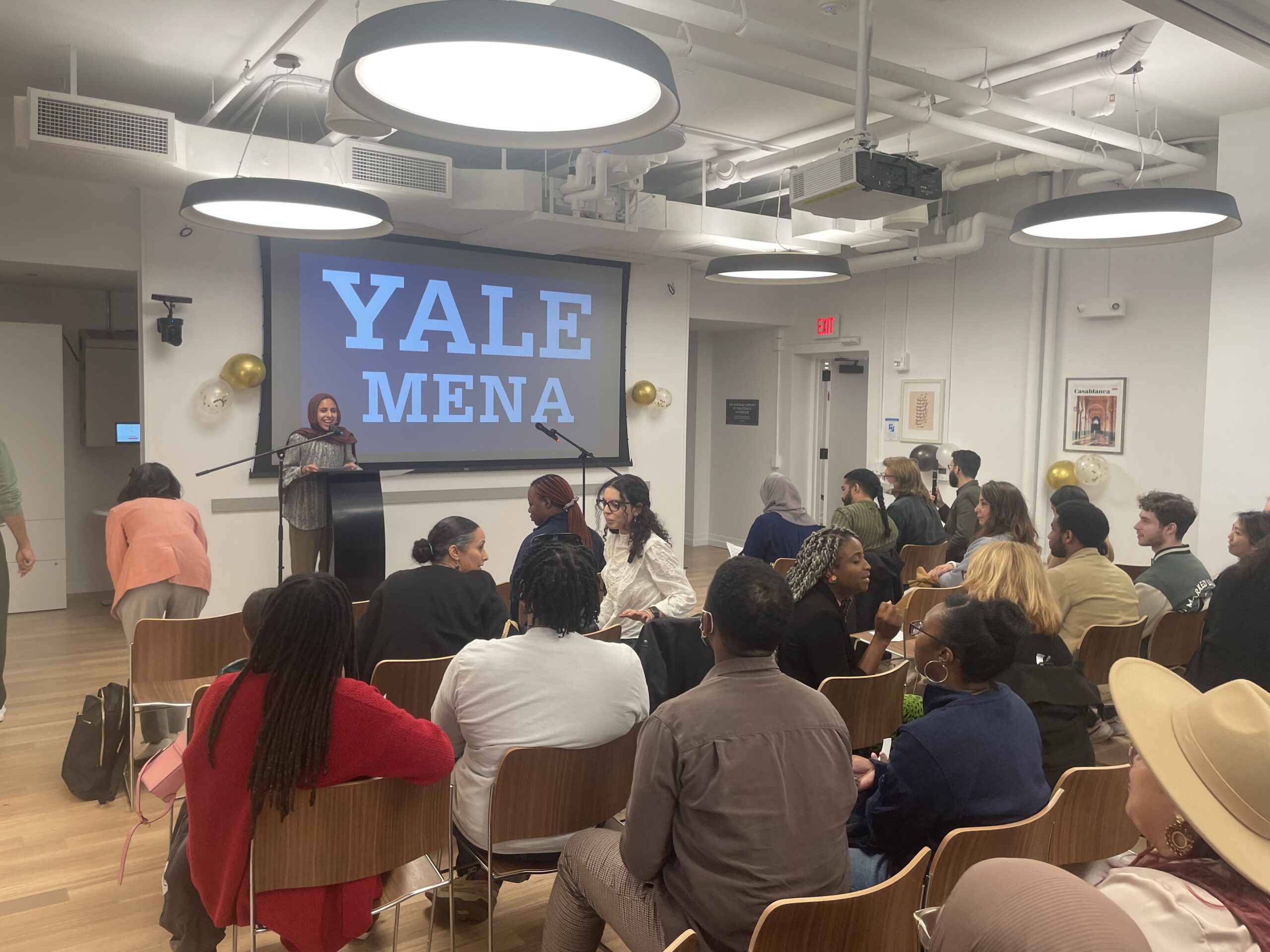MENA Cultural Community hosts grand opening of new space
The Middle Eastern and North African Cultural Community at Yale celebrated its grand opening on Oct. 11.

Orion Kim, Contributing Photographer
On Friday, the Middle Eastern and North African Cultural Community celebrated its grand opening at its new location at 305 Crown St.
The MENACC grand opening event welcomed a diverse array of community members, including students, staff, directors, administrators and supporters. Speakers discussed the significance of having a dedicated MENA space on campus.
According to MENACC’s Assistant Director Lena Ginawi and Joliana Yee, dean of the Asian American Cultural Center, students played a pivotal role in establishing the MENA cultural suite.
“I don’t think any of this would have been possible had it not been for the students who advocated for this space,” Ginawi told the News.
Noor Kareem ’25, one of the peer liaisons at the cultural suite, emphasized that the MENA Students Association and other cultural affinity groups played a crucial role in bringing the cultural suite to fruition.
Student groups have been advocating for a MENA cultural space for at least six years, and the AACC helped establish dedicated spaces and programs for MENA students ahead of the new location at 305 Crown St.
The preparations for the grand opening were extensive and required a collaborative effort. Ginawi detailed her work in hiring staff, equipping and decorating the space, sending out newsletters and coordinating with Yee on the administrative side to ensure the first major event proceeded seamlessly.
The evening began with remarks from Ginawi. Throughout the event, she introduced several community members, each sharing their insights and experiences.
Attendees heard from speakers who reflected on their advocacy for the space and its significance, as well as artists who shared their performances.
Amer Hasan MUS ’24, a Palestinian-American clarinetist, performed a piece composed by Kinan Azmeh titled “Prayer, Tribute to Edward Said.”
Two spoken word artists also took the stage: Adiyah Obolu ’27, who performed her piece “To Birth a Casket,” and Fagr Aboudaka ’27, a MENACC peer liaison, who shared two poems.
Both Obulu and Aboudaka said that art serves as a nexus for uniting the MENA community and shared their excitement about the opportunities the new cultural suite presents.
“The fact that we have a space for first years and anyone who identifies as MENA to show their cultural creativity is so important,” Aboudaka said.
Selma Mazioud ’25, Hana Hamdi NUR ’26 and 2024 Yale World Fellow Sorayah Hosni all shared their stories, earning enthusiastic applause from the audience.
Following the speaking portion, there was a celebratory dinner catered by Mamoun’s Falafel Restaurant. According to Rayan Hansali ’28, for many MENA students, it was the first time they had enjoyed Middle Eastern cuisine since leaving home.
Hansali believes that food is another cultural element that fosters connection, and he looks forward to cooking various traditional dishes in the new cultural suite kitchen.
Aboudaka echoed Hansali’s excitement about the new facility.
“We represent our culture through our food, and our recipes live on through us, so having spaces like this is instrumental,” Aboudaka told the News.
Ginawi said that she wants the space to foster an inclusive environment and that it is important for people to know that the MENA community is a diverse group of people with various religions, dialects, cultural attires and practices.
In addition to creating a welcoming environment to celebrate cultural diversity, the MENACC aims to collaborate with other cultural houses and develop outreach programs.
According to Hansali, the cultural suite has already hosted a mixer with the AACC, and he looks forward to participating in more events in the future.
Aboudaka mentioned additional initiatives she and other staff members are working on, such as mental health programs and healing circles for those feeling isolated due to hateful rhetoric and humanitarian crises overseas.
She added that she hopes to engage in campaigns focused on civic and political participation.The MENA cultural suite has been officially open since Sept. 17.
Correction, Feb. 3: The article has been updated to correctly reflect the name of the piece played by Hasan.







